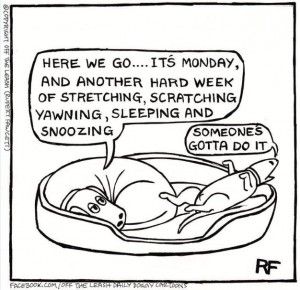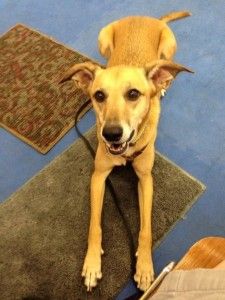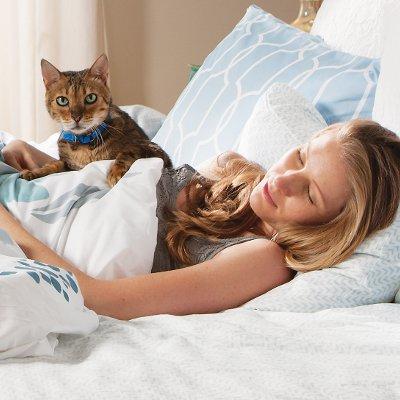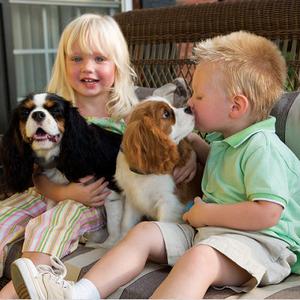By Toni Gibson-Mark, KPA-CTP  Changes can be pretty difficult for a dog. Believe it or not, they really thrive on routine. Waking up, going outside, having breakfast, taking a nice nap, playing with family, taking a walk, having dinner, and going to bed for the night sounds boring to us, but it gives dogs something they can follow. Have you ever had a dog that reminds you it’s dinner time even if you aren’t even near the kitchen? That’s a well-established routine that a dog counts on.
Changes can be pretty difficult for a dog. Believe it or not, they really thrive on routine. Waking up, going outside, having breakfast, taking a nice nap, playing with family, taking a walk, having dinner, and going to bed for the night sounds boring to us, but it gives dogs something they can follow. Have you ever had a dog that reminds you it’s dinner time even if you aren’t even near the kitchen? That’s a well-established routine that a dog counts on.
Unfortunately for a dog, there are tons of disruptions to routines. Sometimes they’re small changes-- like not being home during the normal dinner time to feed them. Sometimes the changes are much bigger—like moving to a new house. Some dogs cope with changes easily, while some dogs really struggle with even the smallest change. The key to success is understanding your dog and being proactive about the changes.
When you’re dealing with small changes, you might not need to do very much. For example, your weekends probably look very different to your weekdays. Your dog might wake up to you at 9am and think “hey… you’re late for work, aren’t you?”, but then quickly recover by nuzzling you in bed. These changes might even be in the dog’s favor—maybe you’re home to give them playtime at noon on Saturday. 
For bigger changes, you should really consider your dog’s personality. Big changes can include moving to a new home, human or animal additions/removals to the family, owner employment changes, shelter changes (i.e. if you went on vacation and boarded your dog), and much more. Some dogs are go-with-the-flow, while others might start to get very anxious. You might see your dog exhibiting symptoms that indicate that they are nervous, such as pacing, licking their lips, panting, or whining.
Whether you anticipate that your dog will be nervous or not, you should take steps to make your dog comfortable during the big changes. For example, the process of moving can be very stressful. Strange people come in, take all of your stuff and put it in a big scary truck, move it in a new house with strange new smells, and then expect you to accept that it’s their new home.
In this case, you can try to make your dog more comfortable by introducing them to the new house first. Perhaps put their bed in it so it has a familiar smell when they arrive. Then have someone else doggysit while you or the movers load and unload the moving truck. When everything is settled and you have time to be calm with your dog, bring your dog to the new house. Reward them for exploring the new house with treats and praise.
Some big changes for dogs might not seem like big changes for you. For example, if your dog attended doggy daycare or a dog park a few times a week, but then stopped because your funding or timing ran low, this is a huge change for the dog but might be a minimal change for you. That was an outlet for a dog to socialize, run off some energy, and enjoy themselves.
Although you might not see symptoms that indicate that your dog is nervous, you might see other symptoms that show that your dog isn’t coping well with the change. Your dog might have pent up energy or seek additional attention to make up for what they were getting. 
The most important part when making changes in a dog’s life is to make the change a good one for your dog. If you’re introducing a new place, thing, or person, making positive associations is the best thing you can do. Give your dog treats and praise whenever they interact with the new thing.
If you’re removing something from the dog’s life, consider what that will do for them physically, socially and emotionally. Prepare something to fill the hole that will be there when the change occurs. Provide ample physical, mental, and/or social stimulation if they are things that your dog counts on.
As the summer comes to an end, children will be going back to school. This is a big change for a dog—their playmates are gone for a good portion of the day. For a dog who is used to the hustle and bustle of kids being around, expecting them to go to an 8+ hour day without the stimulation that they’re used to might be frustrating, stressful, or disappointing. Remember to keep your dog stimulated. If you aren’t able to provide human contact stimulation, purchase a few enrichment toys to keep your dog active and engaged. The Busy Buddy® line carries a fantastic selection of toys that will keep your dog occupied. 
Lastly, even when big changes occur, try to establish a routine for your dog as quickly as possible. They thrive on routine and will feel safer and more secure if they are familiar with the day’s activities. And if you don’t believe me- try to see if your dog notices if you feed him late. I’ll bet you’ll get a little nudge to say “Hey! It’s that time of day!” from your four-legged pal.









